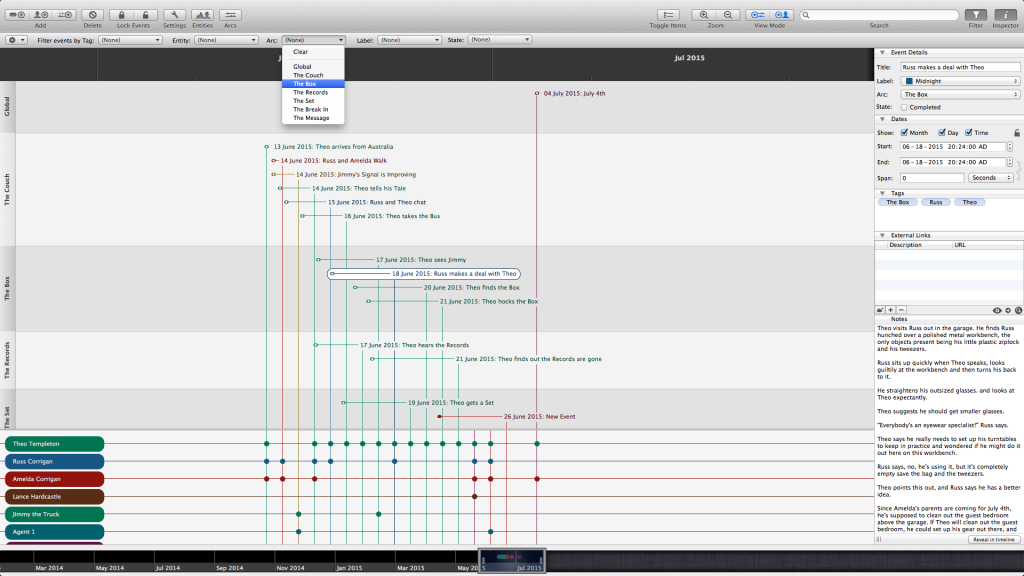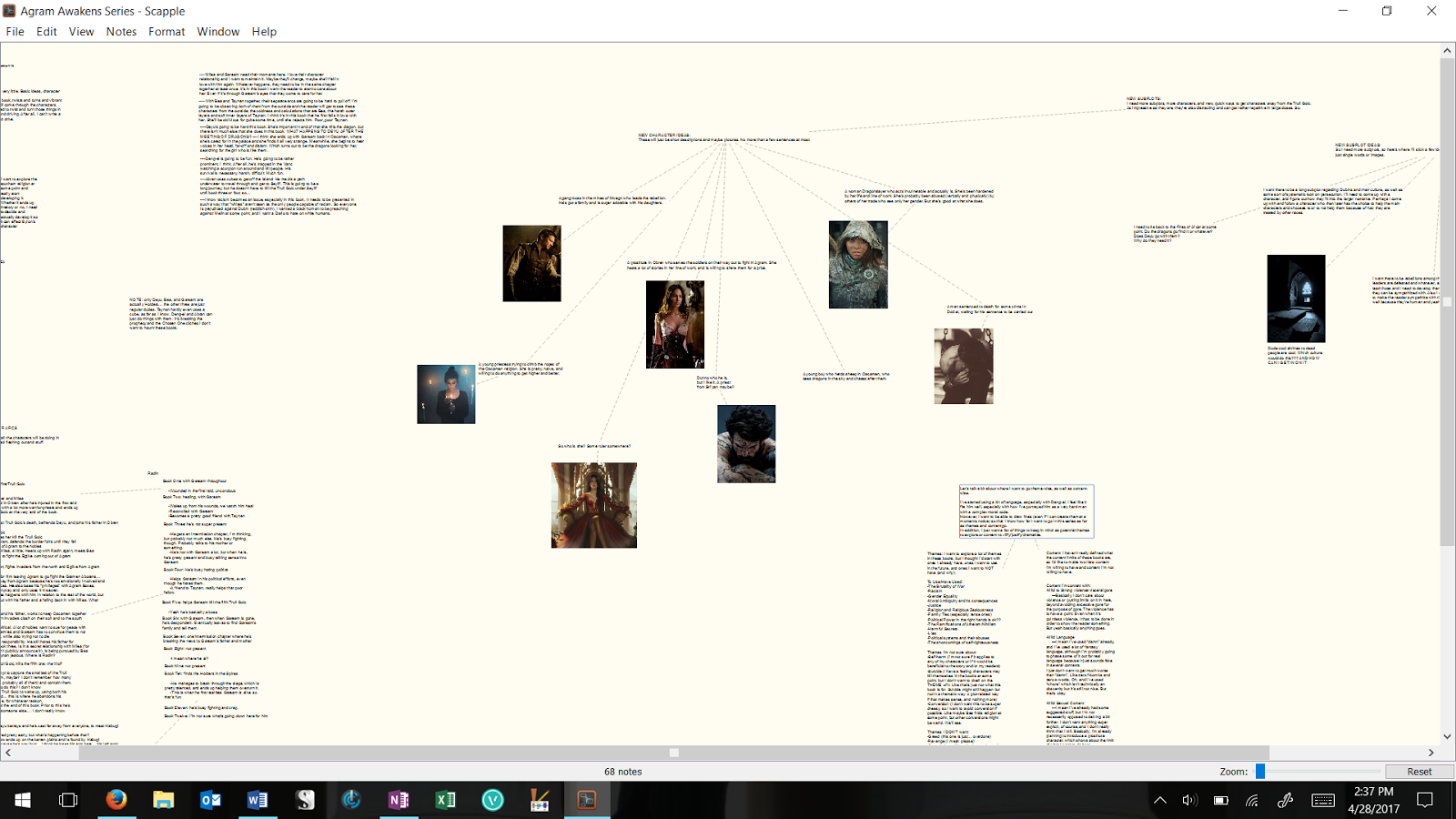

So if you wish to only see your scenes when you lay out your entire manuscript, you might want to group your scenes into chapters at a later date, as when you are looking at a finished first draft and want to export the file.Recently, I realized I needed a series bible for all my books that involve Harp Security. If you create folders for your scenes, which are akin to chapters, when you look at your entire manuscript in the corkboard view, you will see the cards and summaries of your chapters, not your scenes. Press that and you’re given an area to write a summary for your scene, a summary which then appears in the corkboard view of your screen. To the right, in your Inspector, there is a notebook looking button at the top. If you are the type of person who likes to have a scene summary at the tips of your fingers, Scrivener does that too. A third way to name your scene is in the Inspector, underneath the Synopsis area.Īdding and naming a scene allows you more ease in rearranging your novel at a later date, also allowing you to easily find a section of your novel, especially if you name it something descriptive of its events.Īlso, when you write your novel in scenes, you can enter corkboard mode and easily see your novel’s outline and shape.

You may immediately name it, or name it at a later date by a delayed double click on the scene title in your binder, or by clicking on the title directly above your page where you write your scene. To fully utilize Scrivener’s organizing capabilities as you should, use the key shortcut Control+N while in your Manuscript or scene, which will bring up a new scene that is “untitled.” In order to add a scene you have a couple of different options.
AEON TIMELINE IN SCRIVNER FREE
While in page view, you can just click on the “scene” button under the “Manuscript” and begin to write your first chapter.įrom there on, you’re free to type as you see fit. This will put you in the page view mode for your manuscript, which you can then begin writing your novel! To start writing your novel, find the “view mode” grouping of buttons on the upper right of your screen and hit the far left one which looks like a sheet of paper. This is what’s called the “index card” view. Instead you want to click on the “manuscript” icon just below “novel format.” Okay, now a lot of introductions like this will tell you to just start typing over it, but you don’t want to do that here. Whichever template you choose, you’ll get something like the above photo on your screen. So you have to choose–but even if you start your novel in one format and realize you needed to have a novel with parts, or vice versa, you can change things around later.Ĭlick “Choose…” to open a new project with your selected template, choose your file name and the location you want to save it in, and you’ve got a new project. You’ll probably see three: Novel, Novel (with parts), and Short Story. I have a couple that I’ve downloaded over the years (NaNoWriMo offers one, and I downloaded one to coincide with Aeon Timeline, another program that can come in useful for authors), but you don’t need to worry about the ones I have that you don’t see on your screen. Now what you’re seeing are templates for certain formats of fiction. You’ll get a prompt to select a “new template.” So let’s say you just bought Scrivener and you just opened it.
AEON TIMELINE IN SCRIVNER FULL
(Really.)Īnd you know what, if you can’t shell out the $40 or something it is for the full version, win a NaNo event and there’s usually a coupon for winners that awards about 20% off or something. But don’t worry–Scrivener makes that a cinch to do. Yes, there will be a time when you want to put your novel in Word format, like when you want to submit it to an editor or agent or publisher. In fact, you will quickly realize that it’s much better than writing your entire novel in Word or TextEdit or Open Office. Go ahead and open Scrivener–there is nothing to be afraid of. It either looked too intimidating or they just didn’t feel motivated enough to try it.

Now there are a lot of author blogs out there where the author says they bought & downloaded Scrivener (or downloaded the 30-day free trial), and simply never opened it. Instead, my knowledge about Scrivener has come from spending time in it, typing my novels in it, and exploring its uses. I haven’t taken a class on Scrivener (although I have watched a couple of tutorials for certain tasks, such as compiling/exporting my document, syncing my documents, and other formatting tips). I’m honestly an average user of Scrivener. I can usually figure new programs out, but I know nothing about computer programming or anything like that. I don’t consider myself a technophobe, but I’m also not a techie. I’ve been using Scrivener for about three or four years now, and I consider it one of the best writers’ tools out there.


 0 kommentar(er)
0 kommentar(er)
